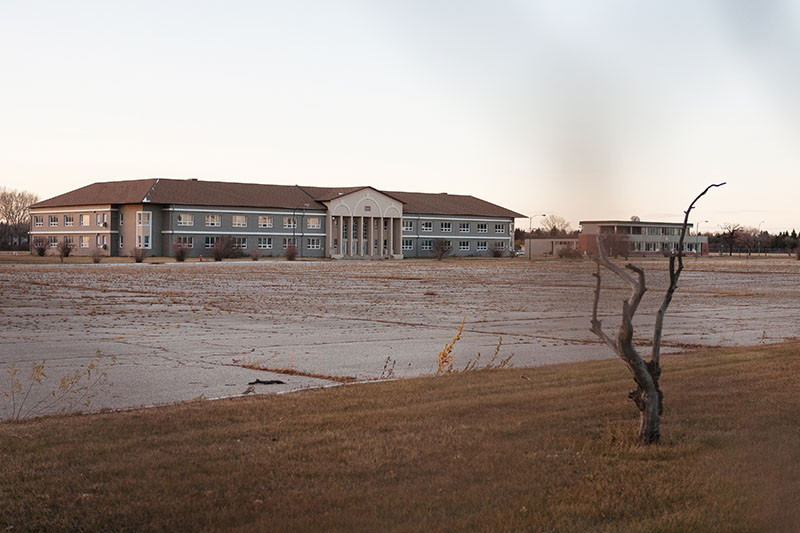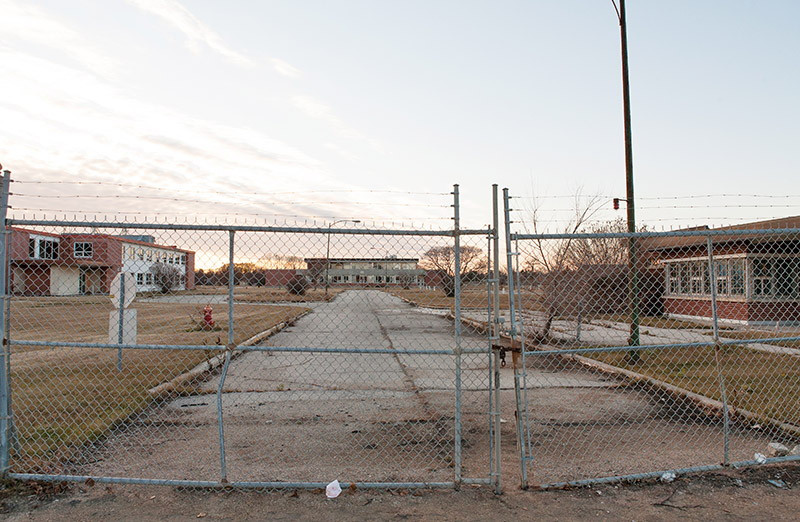Kapyong Barracks a sign of government negligence
Governments need to respect treaty rights before moving forward with projects
The vacant Kapyong Barracks site at the intersection of Grant Avenue and Kenaston Boulevard has been a source of civic disdain for years.
In 2004, the Canadian Forces declared the site surplus land after moving members of the Princess Patricia’s Canadian Light Infantry to a military base in Shilo.
During the ensuing eight years, six First Nations have fought the federal government in court, arguing that an 1871 treaty dictates that Ottawa must first offer the land to the First Nations before it pursues other options. In other words, the Aboriginal communities believe they have the right of first refusal on surplus federal land.
As the court battle drags on, the long row houses and military structures have grown mouldy and dilapidated, languishing on a 90-hectare site that possesses all the potential in the world.
Residents of the area, and Winnipeggers all over the city, find the situation intolerable. Many even utter racial slurs and spout half-truths when referring to Kapyong.
For them, the metaphorical distinctions are clear.
Prior to 2004, the Kapyong Barracks was a proud institution housing courageous military personnel in a decidedly upper-crust neighbourhood.
After 2004, the site has taken on the visual contours of extreme poverty - the kind of poverty seen in many First Nations communities.
Unfortunately, many Winnipeggers squarely blame the First Nations themselves for this poverty, as though it were a native character flaw rather than the result of historic prejudice and federal dependency.
For them, Kapyong stands as a visual reminder that their racial biases are correct - that Aboriginal people are somehow intrinsically lazy and morally deficient. Everything they touch, including the Kapyong Barracks, turns to shit.
These people couldn’t be more wrong. But, by remaining silent, the City of Winnipeg often uses this populist rancour for political benefit while they ignore Aboriginal treaty rights and land claims.
Winnipeg ignores First Nations
In January of this year, City Hall approved a plan to widen Kenaston Boulevard to six lanes of traffic by demolishing some 50 homes along the east side and acquiring land from the Kapyong Barracks on the west side.
To help explain the necessity of the project, Winnipeg’s public works director stated current road standards require six lanes when traffic exceeds 35,000 vehicles a day. Kenaston already well exceeds 50,000 vehicles.
As such, support for the decision to widen the street borders on public consensus, and the city has been moving swiftly toward demolishing the roughly 50 homes on the east side.
But everyone knows the project won’t begin until the Kapyong Barracks dispute is resolved.
No matter how sound a public policy decision expanding Kenaston may be, ignoring the Kapyong dispute shows no respect for the six First Nations currently in court. And it shows no respect for the people who are being forced from their homes well before shovels are in the ground.
Similarly, the City of Winnipeg has ignored First Nations concerns around expanding water and sewer services to neighbouring bedroom communities; a matter The Uniter has reported on at length.
Rather than reach a resolution with First Nations, disputes with Aboriginal communities are left largely in the hands of the courts while the city moves forward.
And, as the legal process gets bogged down with delays, many Winnipeggers point a finger at Aboriginals for the ballooning costs.
City officials, as a way of shoring up public support, can subsequently cry foul over greedy communities holding back municipal progress.
What’s the solution?
To be fair, the City of Winnipeg is not the only culprit when it comes to ignoring or shrugging off First Nations land or resource rights. After all, it was arguably the shortsightedness of the federal government that caused the Kapyong controversy to begin with.
Whether it be natural resources development in Alberta or the expansion of a major municipal roadway in Winnipeg, Canadians need governments that are willing to sit down with Aboriginal communities in the first instance.
In 1994, University of Victoria political scientist James Tully wrote a fascinating book, titled Strange Multiplicity, on rethinking Canada’s constitutional arrangement with First Nations and other minorities. He wrote that Canada should return to ancient constitutional principles - or conventions - inherent in the treaties; the principles of mutual recognition, consent and continuity.
Governments, he argues, should reach agreements with First Nations on the basis of mutual recognition (both people recognizing the others’ right to exist), consent to sharing land and resources; and continuity of any consensual agreement until it is amended in good faith by both parties.
In Winnipeg and across the country, this kind of thinking is desperately needed.
It would go a long way toward restoring the relationship between First Nations and other levels of government. And it could potentially get roads widened and oil pipelines built faster, and in a way that can benefit everyone.
The Kapyong Barracks site stands as a massive visual reminder of the failure of governments at all levels to adequately consider and respect the rights of First Nations in Canada.
Published in Volume 67, Number 10 of The Uniter (November 7, 2012)








